#Princess Thyra of Denmark
Explore tagged Tumblr posts
Text

Princesses Dagmar and Thyra of Denmark, 1863
<source>
#ooh new rare!#princess dagmar of denmark#maria feodorovna#princess thyra of denmark#crown princess thyra of hanover#dagmar of denmark#Thyra of Denmark#1863#circa 1863#1860s#rare photos
253 notes
·
View notes
Text

Rare picture of Princess Thyra smiling! 💗
10 notes
·
View notes
Text
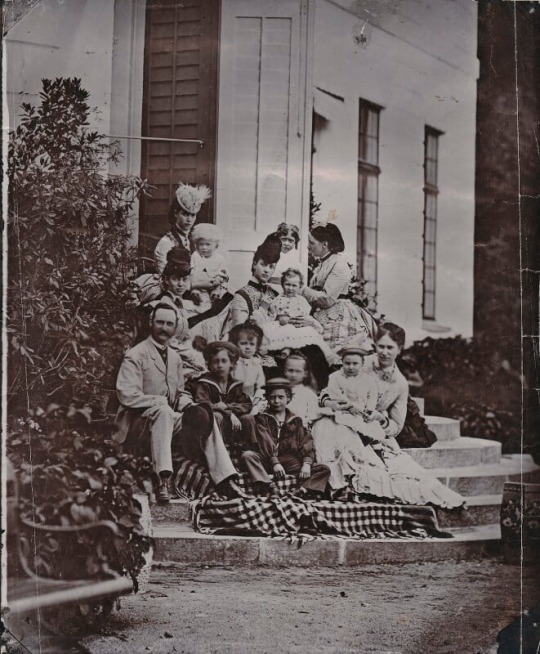
Danish royal family 1872
Tsesarevna Maria Feodorovna with her son Grand Duke George Alexandrovich, Princess Alexandra of Wales and her daughter Princess Maud and Princess Victoria with her grandmother Queen Louise, Crown Prince Frederick and his sister Princess Thyra, Prince Albert Victor, Grand Duke Nicholas, Prince George (I don't really know who the girl next to Nicholas is but it might be Princess Louise of Wales), Princess Louise and her son Prince Christian of Denmark.
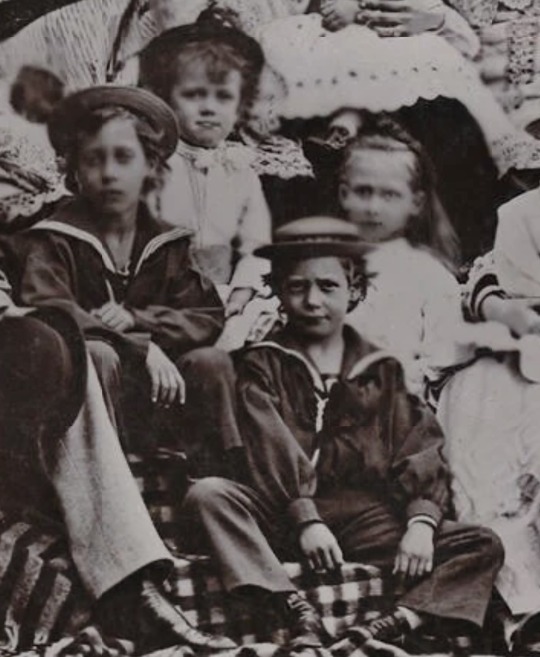
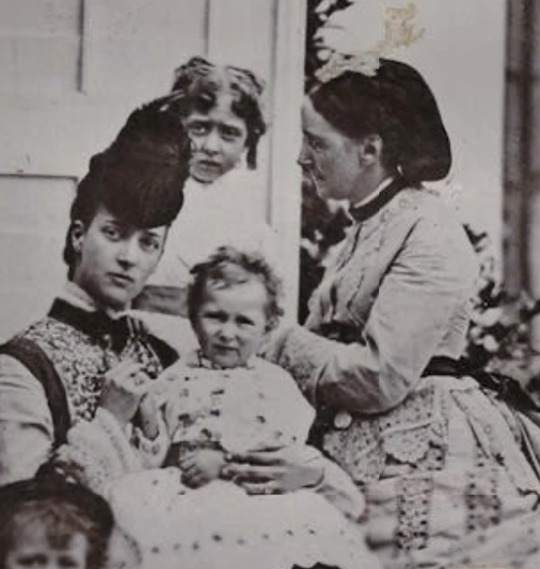

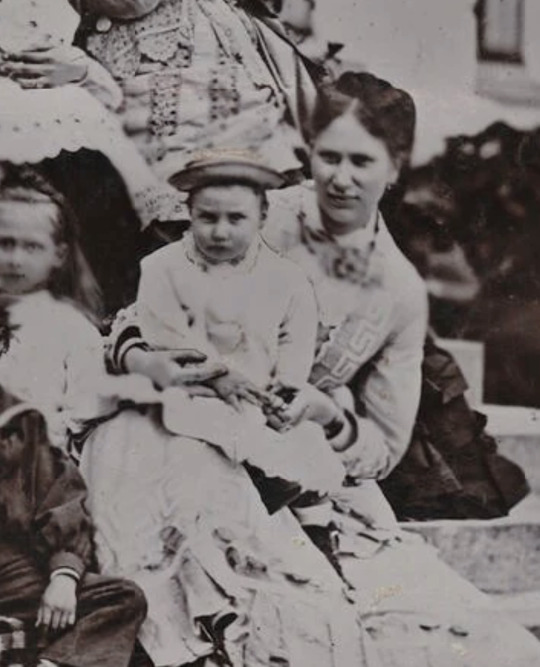
#queen louise of denmark#Frederick VIII#maria feodorovna#queen alexandra#Princess Thyra of Denmark#Princess louise of Sweden#albert victor#George v#nicholas ii#george alexandrovich#Victoria of Wales#maud of wales#Christian X#danish royal family#1870s
80 notes
·
View notes
Text

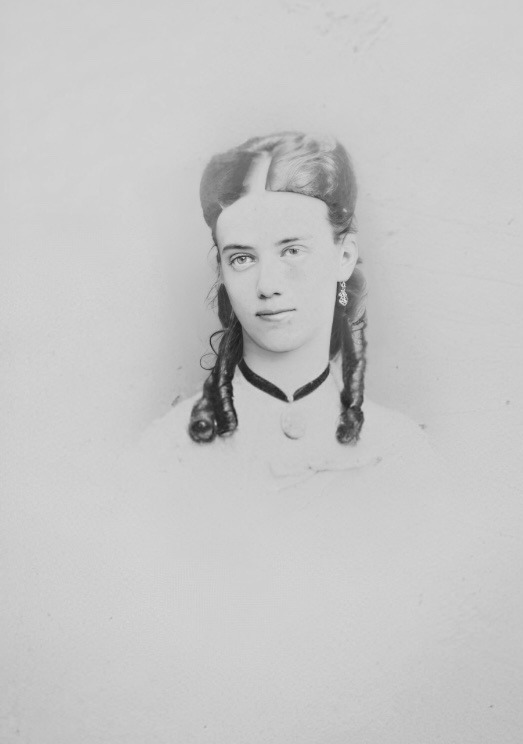
”The youngest of families tends to be treated with special tenderness, and that was the case here as well. Both the parents and the entire Danish people loved the young Prince [Waldemar] and Princess [Thyra], […] As also the youngest of the capital's "favourites", Princess Tyra, left her childhood home to take her place by the Duke of Cumberland's side, there was sorrow mixed in the festive atmosphere.”
Kong Christian IX; Et mindeskrift by J.C Jorgennsen & co, 1906.
#Princess Thyra of Denmark#Danish Royal Family#Royalty#Royal History#House of Hanover#Thyra of Cumberland#Sweet Thyra… :’(
26 notes
·
View notes
Text

12 notes
·
View notes
Text
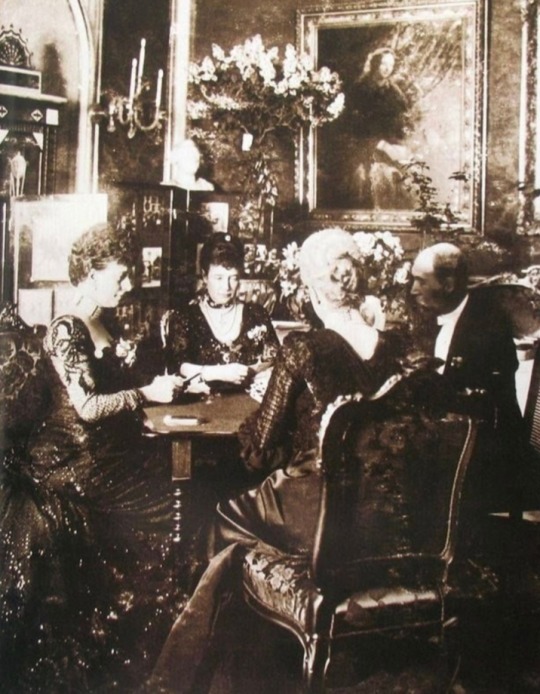
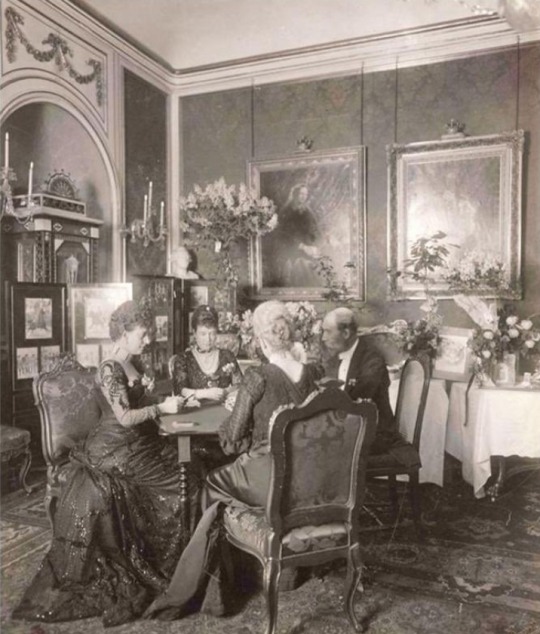

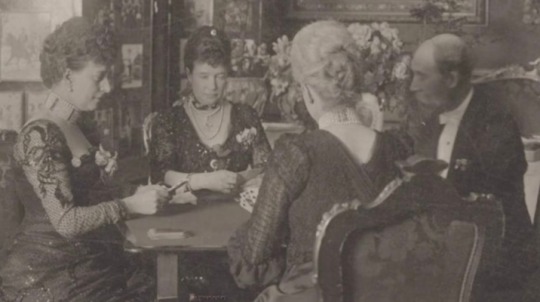
Queen Alexandra of the United Kingdom, Empress Maria Feodorovna of Russia, Princess Thyra, and their father King Christian IX of Denmark playing cards.
—
Alexandra of Denmark (Alexandra Caroline Marie Charlotte Louise Julia; 1 December 1844 – 20 November 1925) was Queen of the United Kingdom and the British Dominions, and Empress of India from 22 January 1901 to 6 May 1910 as the wife of King-Emperor Edward VII.
—
Maria Feodorovna (26 November 1847 – 13 October 1928), known before her marriage as Princess Dagmar of Denmark, was Empress of Russia from 1881 to 1894 as the wife of Emperor Alexander III.
She was the second daughter of Christian IX of Denmark and Louise of Hesse-Kassel.
Maria's eldest son became the last Russian monarch, Emperor Nicholas II.
Maria lived for 10 years after Bolshevik functionaries murdered Nicholas and his immediate family in 1918.
—
Princess Thyra of Denmark (Thyra Amalie Caroline Charlotte Anna; 29 September 1853 – 26 February 1933) was the youngest daughter and fifth child of Christian IX of Denmark and Louise of Hesse-Kassel.
In 1878, she married Ernest Augustus, the exiled heir to the Kingdom of Hanover.
As the Kingdom of Hanover had been annexed by Prussia in 1866, she spent most of her life in exile with her husband in Austria.
—
Christian IX (8 April 1818 – 29 January 1906) was King of Denmark from 15 November 1863 until his death in 1906.
From 1863 to 1864, he was concurrently Duke of Schleswig, Holstein and Lauenburg.
#Alexandra of Denmark#Queen Alexandra of the United Kingdom#Empress Maria Feodorovna of Russia#Princess Dagmar of Denmark#Princess Thyra of Denmark#King Christian IX of Denmark#Prince Christian of Schleswig-Holstein-Sonderburg-Beck#House of Glücksburg#House of Hesse#House of Romanov#House of Hanover#British Royal Family#Danish Royal Family#Russian Royal Family
11 notes
·
View notes
Photo

10 notes
·
View notes
Text
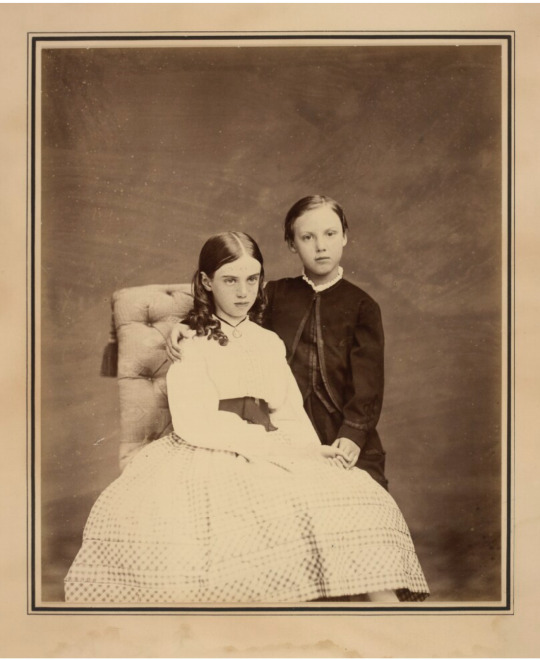
Princess Thyra and Prince Valdemar of Denmark
Princess Thyra of Denmark (1853-1933) - youngest daughter and fifth child of Christian IX of Denmark and Louise of Hesse-Kassel.
Prince Valdemar of Denmark (1858-1939) - third son and youngest child of Christian IX of Denmark and Louise of Hesse-Kassel
Brother and sister of Alexandra, Queen of England, and Maria Feodorovna, Empress of all the Russias.
#russian history#danish royal family#Princess Thyra of Denmark#Prince Valdemar of Denmark#vintage photography#empress maria feodorovna#Alexandra#Queen of England#Q
10 notes
·
View notes
Text

Crown Princess Louise of Denmark with her 3 of her children - Prince Valdemar, seated on her lap. Princess Thyra, stood beside them. And Prince Frederick in back.
#queen louise of denmark#louise of hesse-kassel#king frederick viii of denmark#princess thyra of denmark#crown princess thyra of hanover#prince valdemar of denmark#danish royal family#rare photo#1860s
9 notes
·
View notes
Text
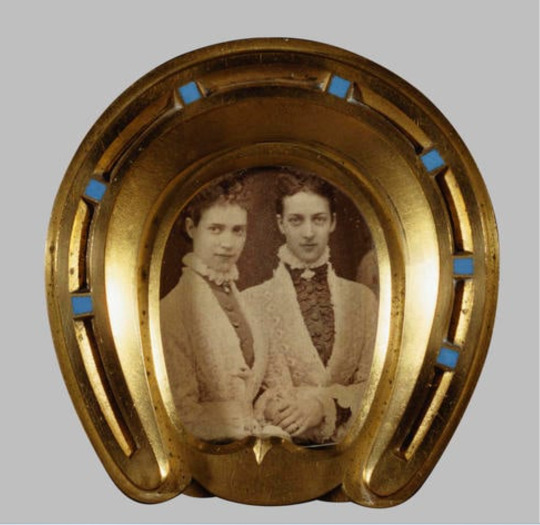

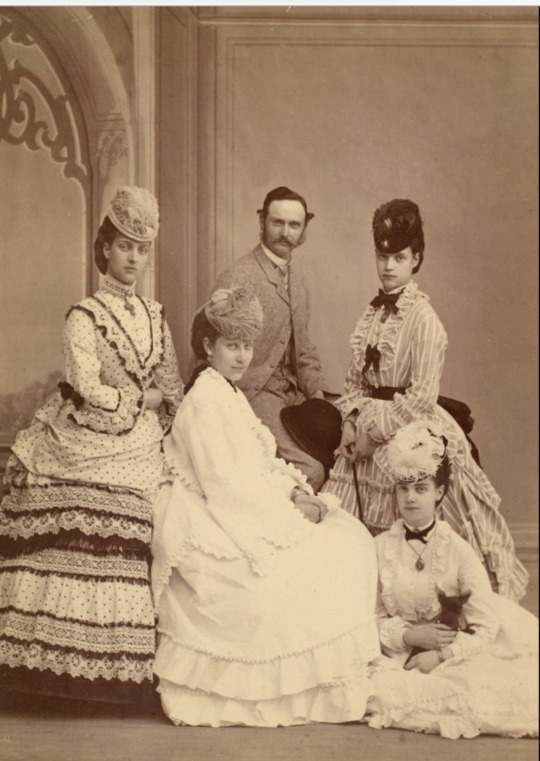


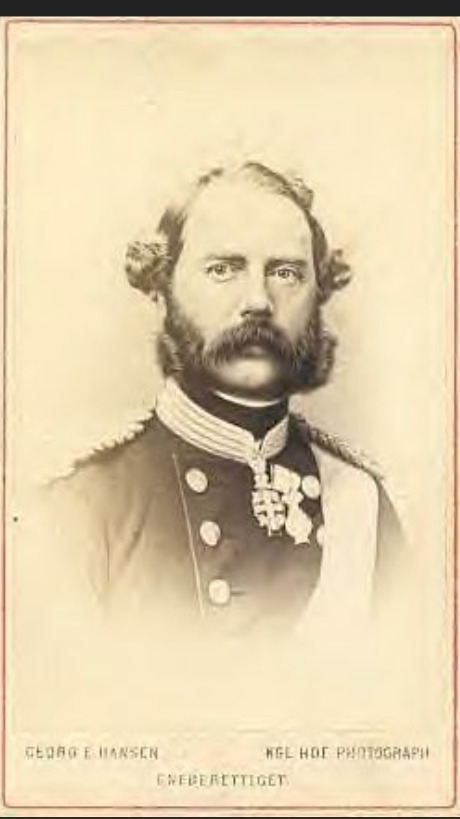
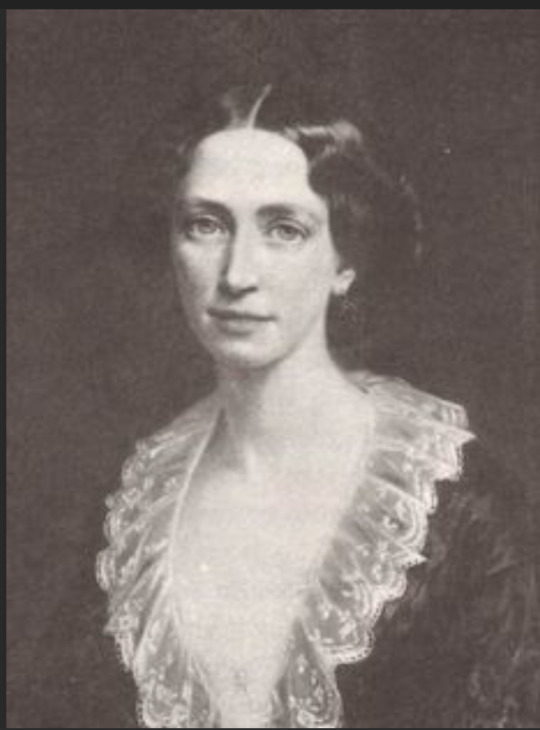
Photographs: 1. Alexandra and her younger sister Dagmar; 2. The Danish Royal Family: From left to right: Dagmar (Marie Feodorovna), the little one by Dagmar's knee should be Prince Valdemar, the youngest; standing in back of the child, the oldest male, future King Frederick VIII; King Christian the IX is in the middle, standing in back of his wife Louise; standing by Louise is Princess Thyra; next to Thyra is the future Queen Alexandra; standing in the back, between Thyra and Alexandra, is George, the future King of the Helenes; 3. In this picture, a very beautiful Princess Alexandra; sitting by her is Princess Lovisa of Sweden, the wife of Frederick, who is standing by her; next to Frederick is Dagmar, and sitting on the floor holding a little dog is Thyra; 4. Christian IX 5. Queen Louise; 6. Christian IX 7. Queen Louise
The Danish Royal Family
King Christian IX of Denmark (1818 - 1906) and Queen Louise of Denmark (1817 - 1898) nee Louise of Hesse-Kessel and their children
This Wednesday, a little love for the Danish Royal Family, who gave us Queen Alexandra of England, one of the most beautiful queens to sit on a throne since photography was created (no makeup, Botox, fillers, plastic surgery), and her sister, Empress Maria Feodorovna (Princess Dagmar of Denmark) one of the prettiest and most beloved Empresses of all the Russias.
So where did all that beauty come from? Most of us have seen photographs of Christian IX and Queen Louise in their older years. At least I had not seen them young. I looked for some photos, and I am including them here. Both of them were good-looking. Louise had a pretty face and beautiful eyes. And so did Christian! He was not bad-looking at all, tall and slim. The little cleft on Alexandra's chin apparently came from her father. The girls had good genes.
The House of Glücksburg, to which Christian IX and Queen Louise belonged, is a collateral branch of the German House of Oldenburg. Its members have reigned at various times in Denmark, Norway, Sweden, Iceland, Greece, and several northern German states.
King Christian IX and Queen Louise were double cousins. King Christian was called the "father-in-law of Europe" on account of the marriage of his children to foreign princes and princesses.
Current monarchs King Charles III of the United Kingdom, Queen Margrethe II of Denmark, and King Harald V of Norway, as well as former queens consort Ann Marie of Greece and Sofia of Spain, are patrilineal members of cadet branches of the House of Glücksburg. (gcl)
#romanov dynasty#danish royal family#Queen Louise of denmark#Louise of Hesse-Kessel#King Christian IX of Denmark#Princess Alexandra of Denmark#Princess Dagmar of Denmark#Princess Lovisa of Sweden and Norway#Thyra#Crown Princess of Hanover
19 notes
·
View notes
Photo
The three Danish sister icons 😍✨🫀

Danish sisters Tsaritsa Maria Feodorovna of Russia [née Princess Dagmar] and the Crown Princess of Hanover [née Princess Thyra]; their eldest sibling Queen Alexandra of the UK is seated.
#queen alexandra#alexandra of denmark#empress maria feodorovna#dagmar of denmark#princess thyra of denmark#crown princess thyra of hanover#rare photo
93 notes
·
View notes
Text






Sunderland's Royal Jewel Vault (54/∞) ♛
↬ Queen Alexandra's Sapphire Tiara
Early into her marriage, Queen Alexandra feuded with her in-laws, particularly her mother-in-law, the Dowager Duchess of Glencairn. As the daughter of Emperor Alexander II of Russia, Alexandra was bequeathed a magnificent jewellery collection which she boasted frequently. By 1862, the Sunderlandian royal duchesses and princesses were sorely jealous of Alexandra’s diamonds, the Dowager Duchess most of all. The duchess blamed Alexandra for living a life of imperial luxury in the secular, fledgeling state of Sunderland. Alexandra defended herself, stating that, as queen, she was entitled to a splendid wardrobe “as would be expected in all civilized nations.” As her relationship with the duchess continued to break down, Alexandra wrote angry letters to her parents. The young queen described her mother-in-law as an “arrogant, miserable old shrew.” The rivalry enraged Empress Maria, who wrote to George I, urging him to defend her daughter from “a mother-in-law so foul-mannered and unserious.” King Nicholas later reflected, “My mother and grandmother respected each other, but they were both strong in character and could never see eye to eye.” It was around this time that yet another tiara entered Alexandra’s jewellery box. A sapphire button tiara with diamond scroll elements. Alexandra wrote about the tiara and its matching parure in January 1869: “Much pleased with the lovely tiara & necklace my dear George arranged for me. The sapphires were mine & the diamonds from George’s Aunt Wilhemina & Aunt Westminster. It’s all so beautiful & in good taste . . .” Alexandra was first depicted wearing the tiara in an 1865 portrait. She later wore the tiara to the wedding ceremony of her third son, Prince William, in 1891. After Alexandra died in 1925, it was left to her daughter-in-law, Princess Thyra of Denmark, the Duchess of Albion. Thyra, who had a knack for social work and enjoyed “being among the people”, was painted in the tiara and wore it to the enthronements of her brother-in-law, King Nicholas, in 1921 and her nephew, George II, in 1930. Following, Thyra’s death in the mid-1940s, the tiara was passed to her own daughter-in-law, Madeline, Countess of Lennox. Several photographs of the countess wearing the piece were snapped in the 1950s. At some point in the 1950s, the tiara was loaned to the countess’s second daughter, Ruth. As a male-line great-granddaughter of George I, Ruth was styled Her Highness Princess Ruth of Albion until 1943, when King George II restricted princely titles. After this, Ruth became known as Lady Ruth Warwick. Following the loss of her title, Ruth became “aimless” and pursued a short-lived film career, starring in sex comedies “nobody had ever heard of”. According to Princess Alice, George II’s younger daughter, Ruth had failed aspirations to pose for Playboy. “She had the body but not the face,” Alice wrote laconically in her journal. The press ironically dubbed Lady Ruth the “royal family’s smartest dumb blonde.” Ruth wore the tiara to the enthronement of James II in 1956. She never got a chance to wear it to the 1970 enthronement of Louis V, her second cousin once removed. In 1969, Ruth died after crashing her car into a telephone pole. She was thirty-three years old. The funeral was attended by Queen Katherine, Prince Louis and his new wife, Irene, and Prince Clarence. The ailing James II, too weak to attend, noted that he’d had a “crush” on “Cousin Ruth”, who was twenty years his junior. However, the king was also dismissive, stating that Ruth probably crashed because “she was driving like James Dean or something.” Ruth’s death marked the end of the clear line of inheritance of the sapphire tiara. Today, the tiara’s whereabouts are unknown. Most likely it was inherited by one of Ruth’s sisters and subsequently sold or broken up.
#warwick.jewels#✨#ts4#ts4 royal#ts4 edit#ts4 royal legacy#ts4 legacy#ts4 royalty#ts4 monarchy#ts4 screenshots#sims 4#simblr#the sims 4#sims#the sims community#sims 4 screenshots#my sims#ts4 simblr#warwick.extras
47 notes
·
View notes
Text





Crown Prince David was born on this day in 1896
Mentions of War & Miscarriage
—
When the new King, Frederick IX (b.1873) and his teenage wife, Princess Thyra of Denmark (b.1880) welcomed their first child on the 15th of April 1896, they had been married for just over 10 months. The baby was christened David Richard Christian Harald. During his childhood, the young prince became known as Dickie. The boy would become his Grandmother, the Dowager Queen Dagmar’s favourite grandchild,even after the birth of his siblings; Mary, Charlene and Christian with her writing “my beloved Dickie is so young yet a true lion at heart.”
At eighteen, the young prince’s life would be interrupted by the First World War, following his father's decision to side with their second cousin, Wilhelm II of Germany in 1914. During the war Dickie would be stationed in Berlin as the official representative of Corrilea to the Kaiser. His mother Dagmar-whom detested her German cousins failed to compel her husband to not send him, writing to her father, Frederik VIII of Denmark, “Berlin and this war will destroy my innocent boy.” In the end his mother would be correct, for after the war, Dickie would return changed, no longer lively and fun, but “hardened and self-righteous”.
In 1919, Dickie would meet a young, but successful Upsanian-born French-British actress, Nicola DuGant. The prince would immediately become infatuated by the beautiful woman, and quickly began courting her, despite the disapproval of his family- this would lead to tensions within the Royal household, as the young Prince seeked to defy his father and take control of his own life. In 1923, he would propose to Nicola without his fathers permission. This caused the tensions to boil over in the autumn of that year, when Dickie brought “his Nicky” to meet his family. During a heated exchange, the Crown Prince threatened to abdicate his position, in order to marry the woman he loved, only after hearing this, did the King relent and grant his approval, likely just to stop a succession crisis from occurring. The pair were wed in the spring of 1925. Nicola was the first “commoner” to marry into the Corrilean Royal Family.
Despite the marriage's scandalous start, the pair seemed happy together and in 1927 had a son, Prince George Frederick James (later James V). The new prince's birth was traumatic for the Crown Princess lasting for almost forty hours, with major complications and scarring after the prince was finally delivered via cesarean. As a result for the next decade the couple would experience fertility issues, with Nicola having 12 miscarriages, before the birth of their daughter, Princess Madelyn in 1940.
On the 14th of June 1930, King Frederick IX passed away at 57, after contracting pneumonia. Dickie was sworn in as King moments later, choosing the regnal name Richard II, quoting “The name Richard reminds the public of Lionheart, it is powerful, manly— David reminds them of my great-grandfather, whom never got to be King”. The King's inauguration took place on the 1st of January 1931.
Dickie would oversee Corrilea during the Second World War, choosing to have the nation be a neutral state. However in 1940, Corrilea’s neutrality was breached as Nazi forces invaded the border. The Royal Family and government quickly fled to Britain and established a Government-in-exile at the Corrilean Embassy, while the Family stayed as guests of King George VI of the United Kingdom and lived at St James Palace during the war. The Corrilean Royal Family however, were not unscathed during the war, with Princess Mary’s husband – Robert Argyll, 4th Duke of Argyll and son, George, Earl of Harewood both enlisting in the British army and being killed in action in 1942 and 1943 respectively.
After the Allies took back Corrilea in 1945, the Royal Family returned to mass celebration, and the King, who had given public radio addresses to his nation throughout the duration of the war, was considered a hero, who gave the people morale and a “reason to fight” during the five year Nazi occupation.
As such, the King remained a popular symbol of nationalism and hope for the next ten years, as the nation recovered. In 1953, his son the Crown Prince George would marry his favourite goddaughter, Princess Eliazbeth of Schleswig-Wolfenbüttel-Kassel (b.1936). The Princess, while German, was born and raised in Britain, as her parents fled Germany at the beginning of the war and thus, was considered a good match.
An avid smoker all his life, Richard II would pass away in 1956, of lung cancer. His daughter Madelyn, married in 1965, nine years later to the German Royal — Ludwig III, Duke of Thena. The wedding caused controversy, with many claiming that Richard would have never supported the match as Ludwig's parents were Nazi’s during the war.
—
Inspired by the talented @warwickroyals.
#Corrilea.history#Corrilea.extras#theroyalsofcorrilea#ts4 royalty#ts4 royal family#sims 4 royalty#the sims 4#ts4 royal story#sims 4 royal simblr#sims 4#sims 4 royal family#sims 4 royal legacy
30 notes
·
View notes
Text
𝙲𝚑𝚘𝚌𝚘𝚕𝚊𝚝𝚎 𝚌𝚊𝚛𝚍𝚜 𝚘𝚏 𝚁𝚘𝚢𝚊𝚕 𝚠𝚘𝚖𝚎𝚗 👑✨🍫
(𝙿𝚊𝚛𝚝 𝟹 𝚘𝚞𝚝 𝚘𝚏 𝟺)
~~~~~~~~~~~~~~~~~~~~~~~~~~~~~~~~~~~~~~~~~~~~~~~
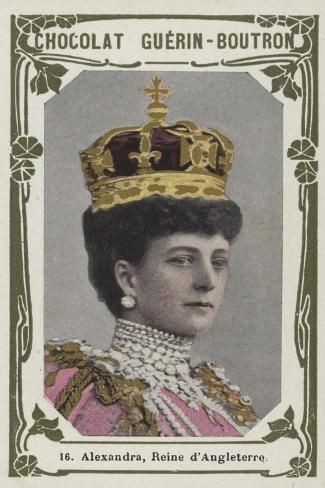
Queen Alexandra 𝚘𝚏 𝚝𝚑𝚎 𝚄𝚗𝚒𝚝𝚎𝚍 𝙺𝚒𝚗𝚐𝚍𝚘𝚖, née Princess Alexandra of Denmark.
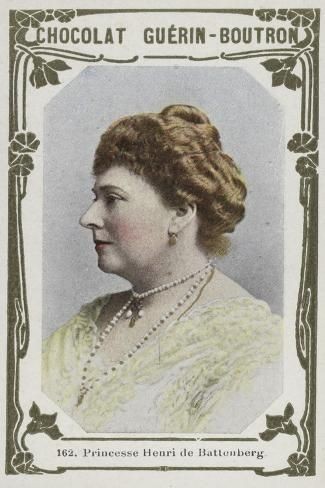
Princess Beatrice of Battenberg, née Princess Beatrice of the United Kingdom.

Princess Andrew of Greece and Denmark, née Princess Alice of Battenberg.
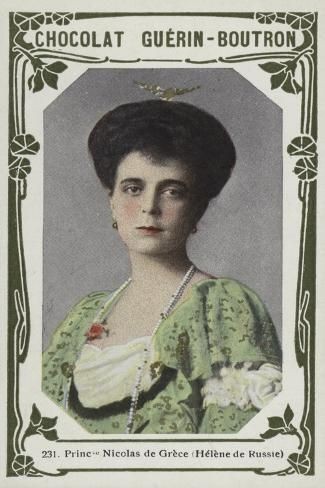
Princess Nicholas of Greece and Denmark, née Grand Duchess Elena Vladimirovna.
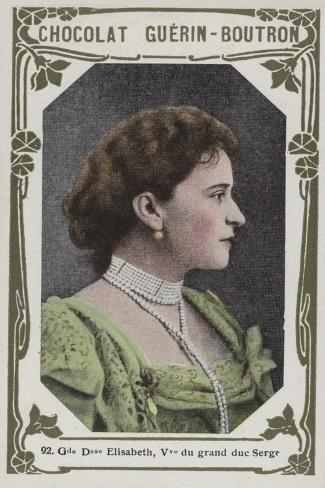
Grand Duchess Elisabeth Feodorovna, née Princess Elisabeth of Hesse.
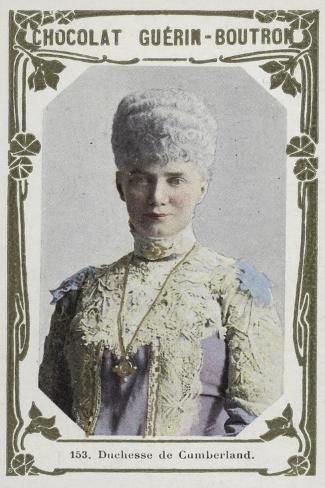
Crown Princess Thyra of Hanover, née Princess Thyra of Denmark.

Princess Olga of Hanover
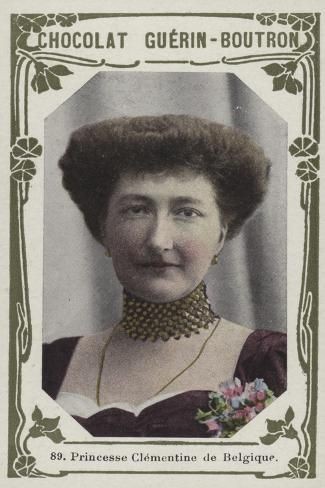
Princess Clementine of Belgium

Queen Alexandrine of Denmark, née Duchess Alexandrine of Mecklenburg-Schwerin.
#queen alexandra#alexandra of denmark#princess beatrice of battenberg#princess alice of battenberg#princess alice of greece and denmark#grand duchess elena vladimirovna#grand duchess elisabeth feodorovna#elisabeth of hesse#princess thyra of denmark#crown princess thyra of hanover#princess olga of hanover#princess clementine of belgium#queen alexandrine of denmark#alexandrine of mecklenburg-schwerin#chocolate cards
19 notes
·
View notes
Photo
Alexandra already looks so grown and very attractive here for only being 13/14!

A very early image of the kids of King Christian IX of Denmark and spouse, Queen Louise, nee princess of Hesse-Kassel . Only Valdemar is missing of the image, because he wasnt born yet. C 1857
#queen alexandra#alexandra of denmark#empress maria feodorovna#dagmar of denmark#king frederick viii of denmark#princess thyra of denmark#crown princess thyra of hanover#king george i of greece#danish royal family#rare photo
52 notes
·
View notes
Text



The Romanovs with Princess Dagmar of Denmark, Princess Thyra of Denmark, Dimitri Pavlovich, Queen Louise of Denmark, and King Frederik of Denmark. Peterhof.
#otma#romanov#olga nikolaevna#tatiana nikolaevna#maria nikolaevna#anastasia nikolaevna#alexei nikolaevich#nicholas ii#peterhof#dmitry pavlovich
7 notes
·
View notes